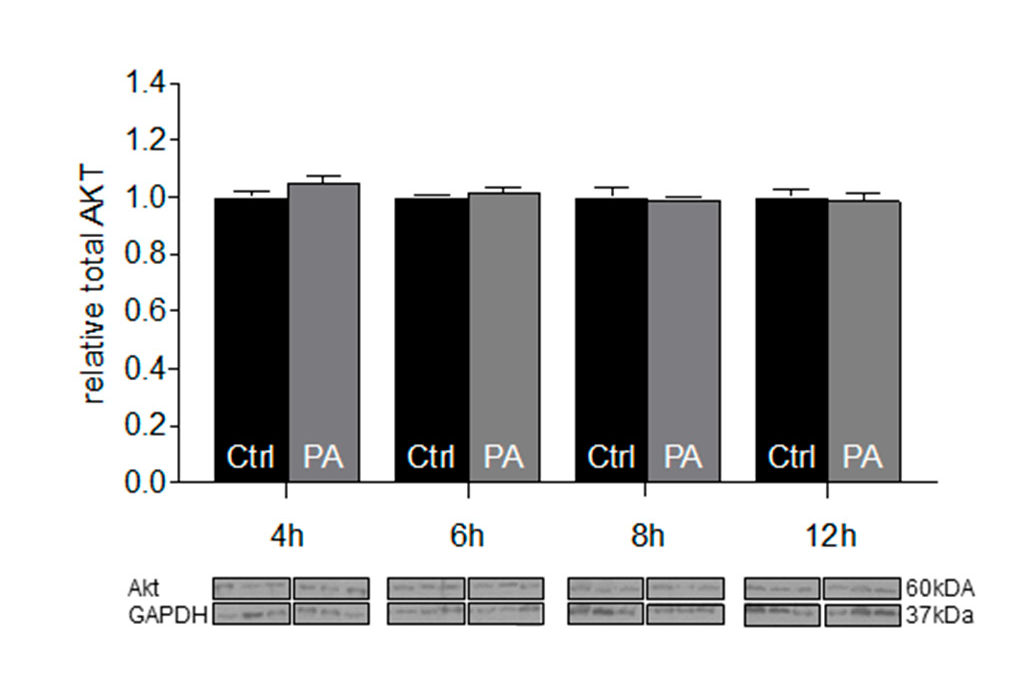Saturated fatty acids are implicated in the development of metabolic diseases, including obesity and type 2 diabetes. There is evidence, however, that polyunsaturated fatty acids can counteract the pathogenic effects of saturated fatty acids. To gain insight into the early molecular mechanisms by which fatty acids influence hypothalamic inflammation and insulin resistance, we performed time-course experiments in a hypothalamic cell line, using different durations of treatment with the saturated fatty acid palmitate, and the omega-3 polyunsaturated fatty acid, docosahexaenoic acid (DHA). Western blot analysis revealed that palmitate elevated the protein levels of phospho(p)AKT in a time-dependent manner. This effect seems involved in the pathogenicity of palmitate, as temporary inhibition of the PI3K/AKT pathway by selective PI3K inhibitors prevented palmitate-induced insulin resistance. Similarly to palmitate, DHA also increased levels of pAKT, but to a weaker extent. Co-administration of DHA with palmitate decreased pAKT close to the basal level after 8 h, and prevented palmitate-induced insulin resistance after 12 h. Measurement of the inflammatory markers pJNK and pNFκB-p65 revealed tonic elevation of both markers in the presence of palmitate alone. DHA alone transiently induced elevation of pJNK, returning to basal levels by 12 h treatment. Co-administration of DHA with palmitate prevented palmitate-induced inflammation after 12 h, but not at earlier time points.

